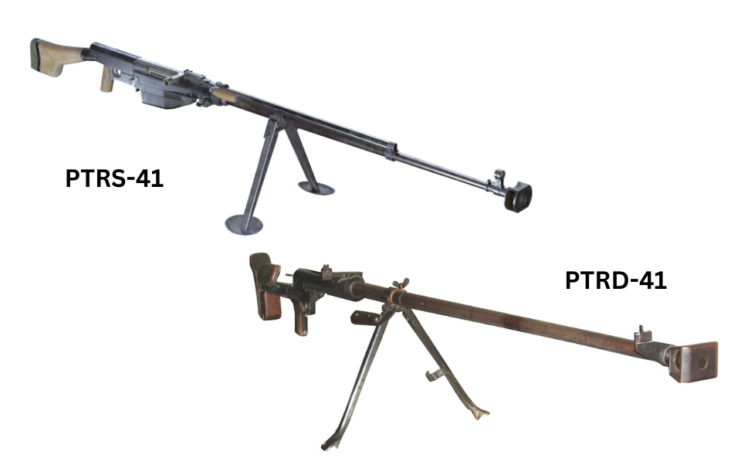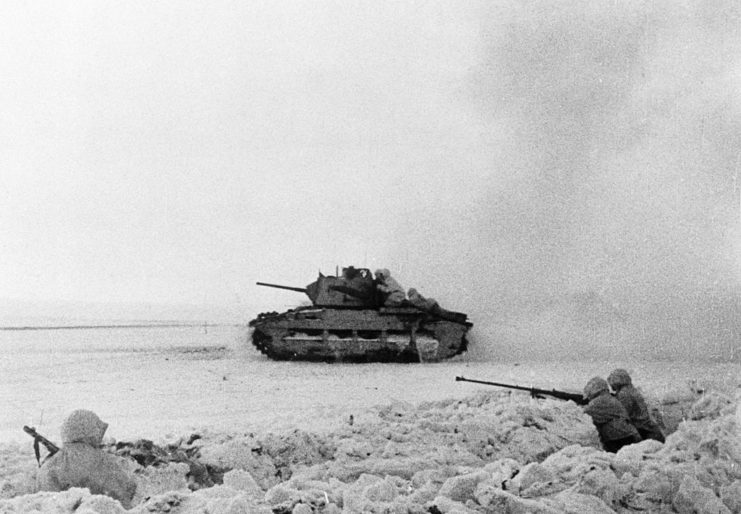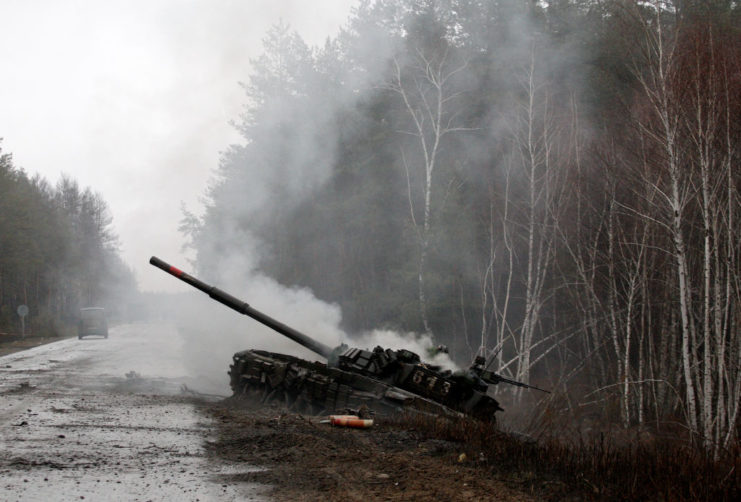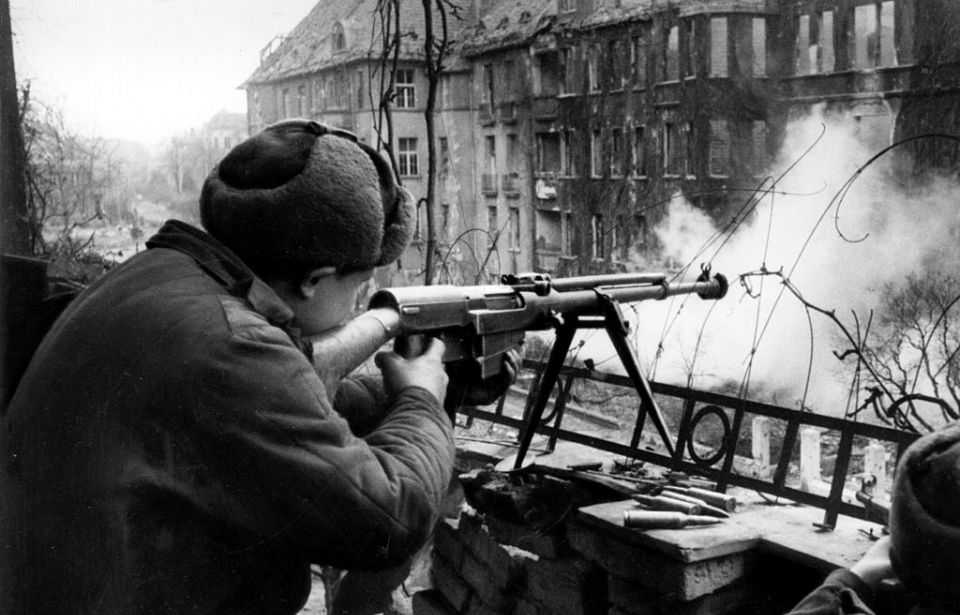The minute tanks entered the battlefield, weapons specialists tried to develop ways to eliminate the threat. During World War I, the Germans introduced the 13.2 mm Tankgewehr M1918, an anti-tank rifle so powerful it did as much damage to the shooter as it did its target. By the time the Second World War was well underway, the Red Army introduced the PTRS-41. Wielded by a “Hero of the Soviet Union” during the Battle of Stalingrad, this Soviet anti-tank rifle is worthy of its menacing reputation.
PTRS-41 versus PTRD-41

Known on the battlefield as the “Simonov”, the PTRS-41 was designed by the Soviet Union in response to the loss of anti-tank artillery at the hands of the Germans. The USSR charged several weapons designers with producing a bandaid solution to the issue by developing a new anti-tank gun.
Designer Sergei Gavrilovich Simonov drew inspiration from his 7.62 x 54 mmR self-loading rifles to develop a larger, more powerful self-loading gun. At the same time, his partner, Vasily Degtyaryov, developed a similar anti-tank rifle, dubbed the PTRD-41.
The PTRD-41 was lighter, cheaper to manufacture and easier to use without sacrificing performance, making it more popular on the battlefield. However, it only fired one round at a time before needing to be manually reloaded. The PTRS-41, on the other hand, was made for more advanced marksmen, as it was harder to use and less reliable because of its gas system. That being said, it used a five-round magazine, making it more effective in tense combat situations.
Both variations used the 14.5 x 114 mm armor-piercing round, but the PTRS-41 had a semi-automatic configuration. The cartridges were stacked in an overlapping pattern, similar to the American M1 Garand, to create a clip that could attach to the gun, allowing for easier transport. However, this was also one of the weapon’s biggest faults, since it was prone to jamming.
The cartridges also produced a large amount of residue, which could block the gas port of the rifle, a fault made up for by its sheer power – each bullet could penetrate armor up to 40 mm thick from 100 meters away.
The PTRS-41 was also equipped with a muzzle break, which helped absorb some of the powerful recoil the gun produced, making it more comfortable for operators in the field, especially over longer periods of time. With a velocity of 3,320 feet per second and a maximum firing range of 1,600 yards, the Simonov gun was a powerful rival against armored vehicles.
Use of the PTRS-41 during the Second World War

After the PTRS-41 was introduced in 1941, it was used across the Eastern Front. By the end of the following year, anti-tank rifle provisions had skyrocketed by 416 percent, and, by 1943, Soviet manufacturers had managed to manufacture over one million units.
Infantry regiments were typically outfitted with their own anti-tank rifle company, with a total of 27 anti-tank teams. Battalions were also occasionally stationed in key locations. Each contained three companies of 70 men and 20 or so anti-tank rifles.
Throughout the defense of Pavlov’s House during the Battle of Stalingrad, Sgt. Yakov Pavlov had the guns mounted on rooftops throughout the city. They were especially effective against German Panzers, as they were able to pierce the thin armor around their turrets at close range.
Use of the anti-tank rifle in the Russo-Ukrainian War

Following the Second World War, the PTRS-41 was used by Communist-backed countries during the Korean War and Chinese Civil War. It also made an appearance in Vietnam and in the hands of the Syrian opposition throughout the country’s ongoing civil war.
More from us: Russia’s Invasion of Ukraine – Where Do We Stand One Year Later?
The PTRS-41 recently reappeared in its native territory, being wielded by the Donetsk People’s Republic. Militiamen fighting in the Russo-Ukrainian War are also using the rifle in the Donbas region against Russian tanks. Surprisingly, the ammunition being used are the same 80-year-old cartridges that were fired from the weapon during World War II.
